Number spirals
This task opens up an investigation of a different kind of spiral. This may open doors to new ideas.
Problem
Let's explore making spirals from the middle outwards.
We'll use a short list of numbers 1 to 144 and some different multiples.
With the multiples of 5 I found these red arrow heads and the green lines that joined up interestingly.
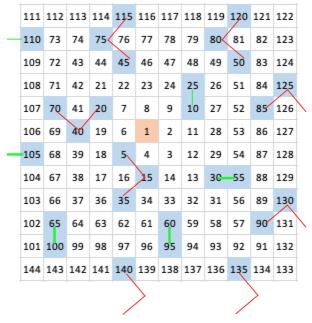
A different spiral and looking at the multiples of 4 gave these straight line arrangements - I wonder why, any ideas?

Lastly a more open spiral and multiples of 6 showed these sloping lines.
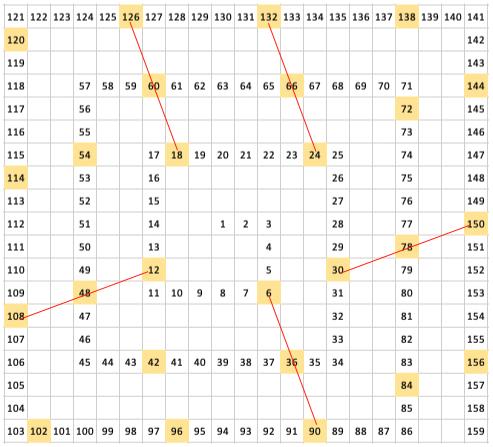
You can also draw spirals on triangular paper, here the 4's are highlighted.
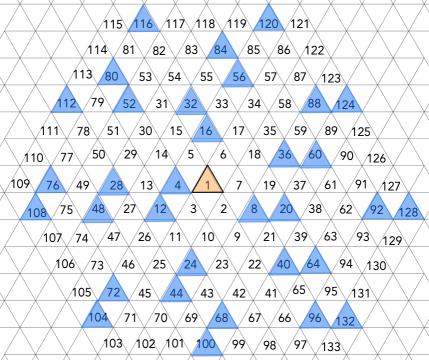
We'll use a short list of numbers 1 to 144 and some different multiples.
With the multiples of 5 I found these red arrow heads and the green lines that joined up interestingly.
Image

A different spiral and looking at the multiples of 4 gave these straight line arrangements - I wonder why, any ideas?
Image

Lastly a more open spiral and multiples of 6 showed these sloping lines.
Image

You can also draw spirals on triangular paper, here the 4's are highlighted.
Image

Student Solutions
Patrick from Manorcroft primary school, Egham
Date: 2012-07-11 09:53:37
Please look at the diagram for a 1234 number spiral and the patterns.
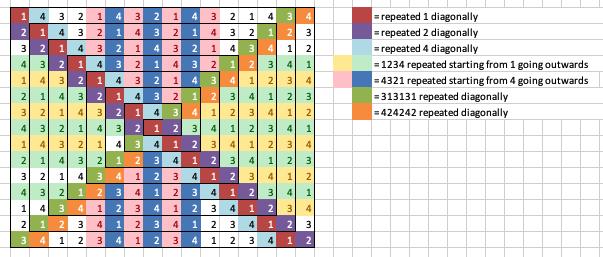
Thomas from C.C.J.S
Date: 2012-08-01 17:27:52
In the attached file I tried to make spiral using the numbers 1-4. 4 was
sometimes the number that completed the rectangles in the spiral. I tried
to work out what the pattern was that got a rectangle ending in a 4. In the
file I have explained how often the rectangles are completed. There was a
sequence and a pattern to the result and the way the spiral looked.
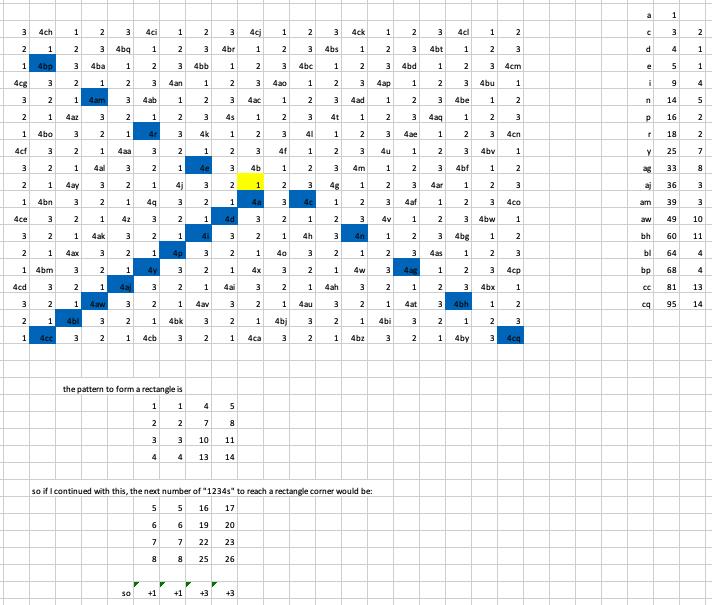
Date: 2012-07-11 09:53:37
Please look at the diagram for a 1234 number spiral and the patterns.
Image

Thomas from C.C.J.S
Date: 2012-08-01 17:27:52
In the attached file I tried to make spiral using the numbers 1-4. 4 was
sometimes the number that completed the rectangles in the spiral. I tried
to work out what the pattern was that got a rectangle ending in a 4. In the
file I have explained how often the rectangles are completed. There was a
sequence and a pattern to the result and the way the spiral looked.
Image

Teachers' Resources
Why do this problem?
This activity is to provide an environment ( the spiral) which is rich for exploration and opportunities for curiosity. It provides a good environment for discovery and surprise. It can help develop skill in numerical pattern spotting.
Possible approach
Depending on the pupils' experiences and abilities you may or may not provide spirals all ready for them to explore. It would be good to remind pupils of what they already know about numbers:- addition, multiplication, primes, multiples, digital roots (https://nrich.maths.org/5524)
It is worth considering giving them the freedom to explore in any way they feel inclined.If ideas need to be shown then try offering this to them:-
Image

Images of the spiral can be downloaded here if needed.
Key questions
What do you notice? (Both numerically and spatially)
Is there some reason why that happens?
Is there some reason why that happens?
